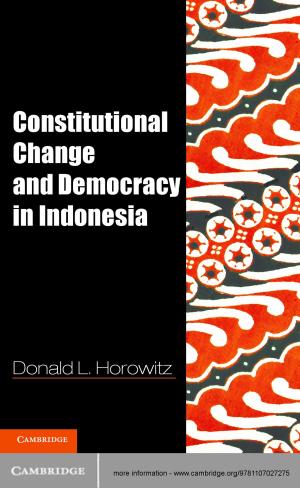Ant-Plant Interactions
Impacts of Humans on Terrestrial Ecosystems
Nonfiction, Science & Nature, Science, Biological Sciences, Entomology, Nature| Author: | ISBN: | 9781108298148 | |
| Publisher: | Cambridge University Press | Publication: | August 17, 2017 |
| Imprint: | Cambridge University Press | Language: | English |
| Author: | |
| ISBN: | 9781108298148 |
| Publisher: | Cambridge University Press |
| Publication: | August 17, 2017 |
| Imprint: | Cambridge University Press |
| Language: | English |
Ants are probably the most dominant insect family on earth, and flowering plants have been the dominant plant group on land for more than 100 million years. In recent decades, human activities have degraded natural environments with unparalleled speed and scale, making it increasingly apparent that interspecific interactions vary not only under different ecological conditions and across habitats, but also according to anthropogenic global change. This is the first volume entirely devoted to the anthropogenic effects on the interactions between these two major components of terrestrial ecosystems. A first-rate team of contributors report their research from a variety of temperate and tropical ecosystems worldwide, including South, Central and North America, Africa, Japan, Polynesia, Indonesia and Australia. It provides an in-depth summary of the current understanding for researchers already acquainted with insect-plant interactions, yet is written at a level to offer a window into the ecology of ant-plant interactions for the mostly uninitiated international scientific community.
Ants are probably the most dominant insect family on earth, and flowering plants have been the dominant plant group on land for more than 100 million years. In recent decades, human activities have degraded natural environments with unparalleled speed and scale, making it increasingly apparent that interspecific interactions vary not only under different ecological conditions and across habitats, but also according to anthropogenic global change. This is the first volume entirely devoted to the anthropogenic effects on the interactions between these two major components of terrestrial ecosystems. A first-rate team of contributors report their research from a variety of temperate and tropical ecosystems worldwide, including South, Central and North America, Africa, Japan, Polynesia, Indonesia and Australia. It provides an in-depth summary of the current understanding for researchers already acquainted with insect-plant interactions, yet is written at a level to offer a window into the ecology of ant-plant interactions for the mostly uninitiated international scientific community.















